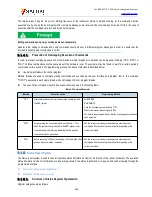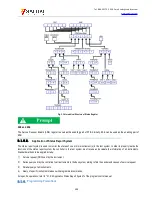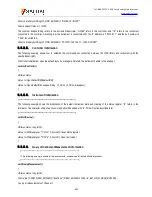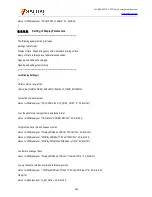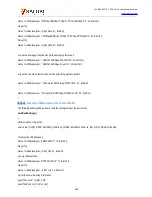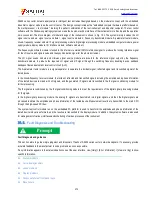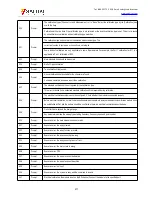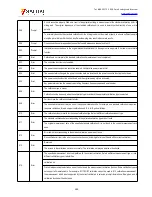
Tel: 886.2.2175 2930 Email: [email protected]
www.salukitec.com
270
Fig. 9.11 Instrument Driver Structure Model
Details are as follows:
1) Functional body. This is the main functional part of the instrument driver and can be understood as the framework program of the
instrument driver.
2) Interactive developer interface. To facilitate use, the graphical interactive developer interface is generally set in the application
environment supporting instrument driver development. For example, the function panel of Labwindows/CVI is a kind of
interactive development interface. Each parameter of the instrument driver function in the function panel is expressed in the
graphical control form.
3) Programming developer interface. This is a software interface for the application program to call the instrument driver function,
such as the dynamic link library file of instrument driver.dll in the Windows system.
4) I/O interface. It is used for actual communication between the instrument driver and instrument. It is allowed to use the special
bus I/O software, such as GPIB and RS-232, or the general standard I/O software ()VISAI/O to be used over multiple buses.
5) Subprogram interface. It is a software interface for the instrument driver to visit other supporting libraries, such as the data library,
FFT function, etc. It will be used when other software modules, operating systems, program code libraries and analysis function
libraries are called by the instrument driver after completion of tasks.
9.4.2.
I/O Library Installation and Configuration
With applications in the test field, the I/O library has experienced various development phases from the traditional instrument to virtual
instrument. In order ensure the instrument interchangeability in the automatic test system and the reusability of the test program, the
instrument drive program has also experienced various development phases. At present, the popular universal driver is an IVI
(Interchangeable Virtual Instruments) instrument driver. Based on the IVI specification, the new instrument programming interface,
inserted drive program and VPP architecture on VISA are defined, so that the test application program is fully independent of the
instrument hardware. In addition, the unique functions of instrument simulation, range detection and status caching are added to
improve the system operating efficiency and truly realize the instrument interchangeability.
The IVI driver is divided into two types: IVI-C and IVI-COM. IVI-COM is based on the Microsoft component
object model (COM) technology, in the COMAPI form, and IVI-C is based on ANSIC, in the CAPI form. The two types of drivers are
designed in accordance with the instrument categories defined in the IVI specifications. The application development environments are
the same, including Visual Studio, Visual Basic, Agilent VEE, LabVIEW, CVI/LabWindows, etc.
In order to meet user requirements in different development environments, two types of drivers are needed at present. The IVI driver of
the vector network analyzer is developed with the Nimbus Driver Studio technology. The IVI-COM and IVI-C driver and program
installation packages are generated directly. For specific installation and configuration, refer to the accompany files of the selected
control card and I/O library.

